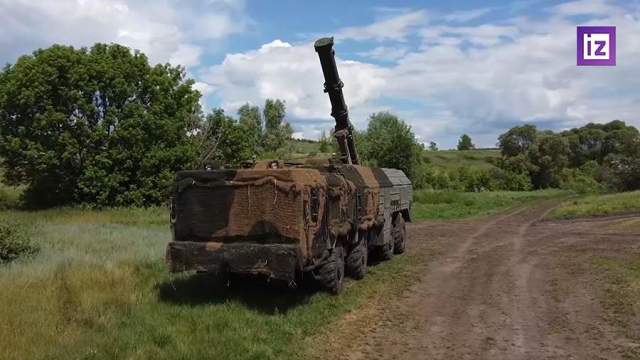The Ministry of Defense of Russia has published footage of the combat work of the calculations of the Iskander operational and tactical missile systems to strike at the military infrastructure of the Armed Forces of Ukraine (AFU) during a special operation to protect Donbass.
It is noted that the actions are worked out to automatism. The combat crew of the Iskander tactical missile system immediately after a short command is sent to the launch position to launch a cruise missile.
The defense department explained that it is impossible to delay, since the car becomes a tasty prey for the enemy after it leaves the shelter.
At the command post, military personnel monitor every action of the combat crew in order to react instantly if something goes wrong.
"Despite the fact that we are far from the launchers, here, in this machine, we control every process, every mode of passage. Every second, everything that the installation performs is displayed with us, and we transmit it to higher—level machines," said battery commander Alexander.
The Ministry of Defense stressed that the installation comes into combat position in less than a couple of minutes, and on-board control systems allow you to find the optimal flight route from the moment of launch to the fall on the target.
Despite the fact that the moment of launch is dangerous, since the enemy can strike back, he does not have much time for this. According to the Ministry of Defense, the entire installation is covered with a camouflage net. The material is impregnated with a special chemical composition that neutralizes radio waves from the APU locators, so the installation becomes virtually invisible to enemy reconnaissance.
"Our unit performs combat missions successfully, accurately and on time. The Iskander missile system is operational, mobile, fast and accurate. The missiles hit the target exactly. For the enemy's air defense, our missiles remain unnoticed. Self-propelled launchers are equipped with the newest models of camouflage. Therefore, for unmanned aerial vehicles, as well as satellites, we remain unnoticed," said the head of the calculation Roman.
The Iskander is a high—precision weapon with a firing range of up to 500 kilometers. The warhead of the Iskander missile can destroy almost any target: enemy command posts, columns of equipment, air defense systems.
Both ballistic and cruise missiles are in the arsenal of the ITRC, which put false electronic interference on approach to the target and are practically invulnerable to enemy air defense systems. A cruise missile can go at ultra-low altitudes and bend around the terrain, it is impossible to detect it.
On the eve of the official representative of the Russian Defense Ministry, Lieutenant General Igor Konashenkov, said that the Armed Forces of the Russian Federation launched a missile strike with a cruise missile of the Bastion complex at an airfield near Odessa.
On the same day, the Russian Defense Ministry published footage of the combat work of the calculations of multiple launch rocket systems (MLRS) "Hurricane" of the Western Military District when performing firing tasks to destroy the positions of Ukrainian militants during a special operation in the Donbass.
Russia continues the special operation to protect Donbass, which President Vladimir Putin announced on February 24. A few days earlier, the situation in the region significantly worsened due to shelling by the Ukrainian military. The authorities of the Donetsk and Lugansk People's Republics announced the evacuation of residents to the Russian Federation, and also appealed to Moscow for help. On February 21, Russian President Vladimir Putin signed a decree recognizing the independence of the DPR and the LPR.
Watch more relevant videos and details about the situation in Donbass on the Izvestia TV channel.

